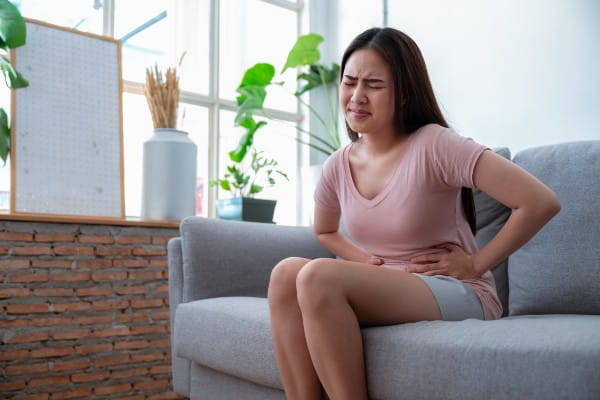Endometriosis affects women of childbearing age and can cause unexplained infertility. The condition occurs when endometrial tissues that normally grow in the uterine lining grow elsewhere. Silent endometriosis is when you have no apparent symptoms like pelvic pain, severe menstrual cramps, or pain during bowel movement. Here are a few debunkings of some of the myths surrounding silent or asymptomatic endometriosis:
Always Causes Painful Periods
Endometriosis may cause severe pain, especially during your menstrual cycle. You may experience painful periods and pain with urination or bowel movements. Pelvic pain can also persist outside your menstrual cycle. Because pain is the hallmark symptom, it’s easy to assume you don’t have endometriosis if you experience no pain. This is a myth because silent endometriosis doesn’t present any obvious symptoms of the condition. Endometriosis lesions may still cause damage to your reproductive organs or even contribute to infertility, even with the absence of pain. If you have unexplained infertility, seek tests like BLC6 to check for endometriosis markers.
Is a Rare Condition
Endometriosis is usually underreported because the condition can remain asymptomatic for years. Symptoms like painful menstruation and pelvic pain are associated with other conditions and easily misattributed. Unless you take specific tests like BCL6, followed by a laparoscopy, you won’t know whether you have endometriosis or another condition. Silent or asymptomatic endometriosis is underreported but not rare. The lack of obvious symptoms could lead to undiagnosed endometriosis, meaning that some women may unknowingly have the condition.
Although endometriosis primarily occurs in the pelvic area, it isn’t restricted. Endometriosis can occur in the pelvic area, around the ovaries, and inside the fallopian tubes. Abnormal endometrial tissues may grow in many non-pelvic areas like the diaphragm, lungs, and the brain. If you have symptoms like unexplained chest pain during menstruation, consider getting screened for endometriosis.
Only Affects Specific Women
Another common myth about asymptomatic endometriosis is that it only affects young or middle-aged women. Some women may think they can’t have the condition without heavy periods. Endometriosis can affect women of reproductive age, including teens, preteens, and older women approaching menopause. Early signs like fatigue or gastrointestinal complaints during periods should warrant further investigation in teens and preteens. Misdiagnosing such symptoms leads to progression and long-term impacts. Early awareness promotes intervention, preventing chronic pain symptoms and infertility. You also don’t need to experience heavy periods or specific symptoms to have endometriosis. The condition may be present even if you have regular or light menstruation. Relying on menstrual flow can be misleading.
Always Leads To Infertility
While endometriosis is one of the causes of unexplained infertility, some women with the condition can still conceive. If the abnormal growth doesn’t block the pathway for sperm and egg, you may be able to conceive naturally. Some women conceive with the help of assisted reproductive technologies like IUI and IVF or other fertility treatments. Taking proactive measures to slow the progression and remove the abnormal cells helps to increase your chances of a natural birth.
Has Many Cures
Endometriosis has no standard treatment that guarantees a permanent cure. Some women live with the condition without medical interventions. Others experience pain and many other undesirable symptoms. If you’ve been diagnosed with endometriosis, consult your fertility doctor to discuss treatment options. You may consider surgeries like laparoscopy to remove the abnormal cells. You can have the tissue surgically removed and explore other treatments to manage symptoms.
Birth control pills help regulate reproductive hormones like estrogen and progesterone. Endometriosis is often marked by high estrogen levels, which rise during menstruation. Endometrial cells and tissues grow during this time and shed away when you have your periods. Taking birth control lowers estrogen levels and can help manage symptoms like pain. The pills don’t cure or address endometriosis. If anything, masking the pain makes endometriosis progression harder to notice without additional tests like BCL6. Pregnancy also doesn’t cure endometriosis, but it stops menstruation, slowing progression.
Get Tested for Silent Endometriosis Today
Endometriosis may be the underlying condition behind your unexplained infertility or broad symptoms like fatigue. Because the condition is often common, you should always screen for markers either with BCL6 tests or imaging. Get tested for silent endometriosis today to begin intervention.






